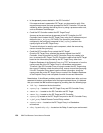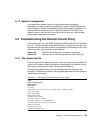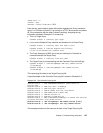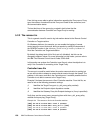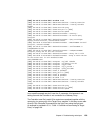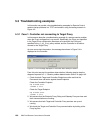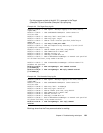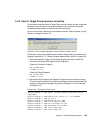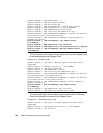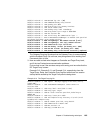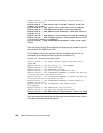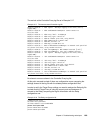
162 IBM Tivoli Remote Control Across Firewalls
5. We check if the Controller connects to the Target Proxy by looking at the
remcon.trc, Example 5-7, checking the value for the /C parameter and
comparing the result with rcproxy.log (Target Proxy log file), Example 5-5.
Example 5-7 The remcon.trc file
[1028] Wed Feb 12 17:35:16 2003 3 found /C parameter
[1028] Wed Feb 12 17:35:16 2003 3 Proxy port is: [5021]
[1028] Wed Feb 12 17:35:16 2003 3 found /E parameter
[1028] Wed Feb 12 17:35:16 2003 3 found /B parameter
[1028] Wed Feb 12 17:35:16 2003 3 EP odnum is 12
[1028] Wed Feb 12 17:35:16 2003 3 CMainFrame::OnCreate - Creating status bar
[1028] Wed Feb 12 17:35:16 2003 3 CMainFrame::OnCreate - Creating resizable
tool bar
[1028] Wed Feb 12 17:35:16 2003 3 Connection with proxy
[1028] Wed Feb 12 17:35:16 2003 3 Connection port is: [5021]
[1028] Wed Feb 12 17:35:43 2003 3 Connection was opened
From the rcproxy.log file in the Example 5-5, we find out that the Proxy listen port
is 5020:
03/02/12 11:39:23 0 1340 Proxy listen port: 5020
While the Controller is trying to connect to port 5021 (Example 5-7):
[1028] Wed Feb 12 17:35:16 2003 3 found /C parameter
[1028] Wed Feb 12 17:35:16 2003 3 Proxy port is: [5021]
This value is read from the rc_de_proxy policy method.
In order to solve this problem, we can either change the rc_def_proxy policy
method or the rcproxy.cfg for the Target Proxy.
In Example 5-8, we change the rc_def_proxy policy method as follows in order to
solve the problem.
Example 5-8 The rc_def_proxy policy method changes in order to fix the problem
#!/bin/sh
# Default value: NO
echo "YES auto 5020" <<=============== we replaced 5021 with 5020
exit 0



